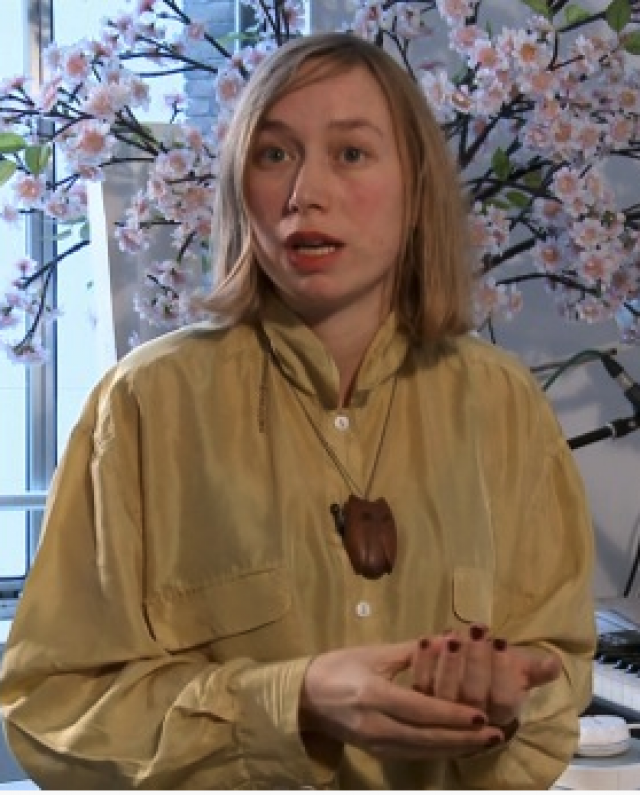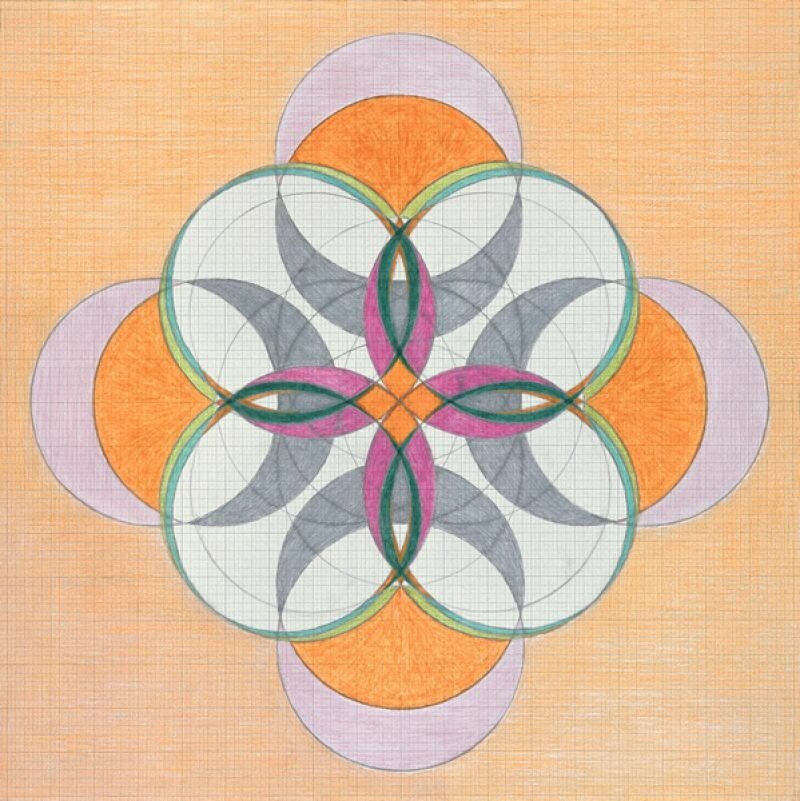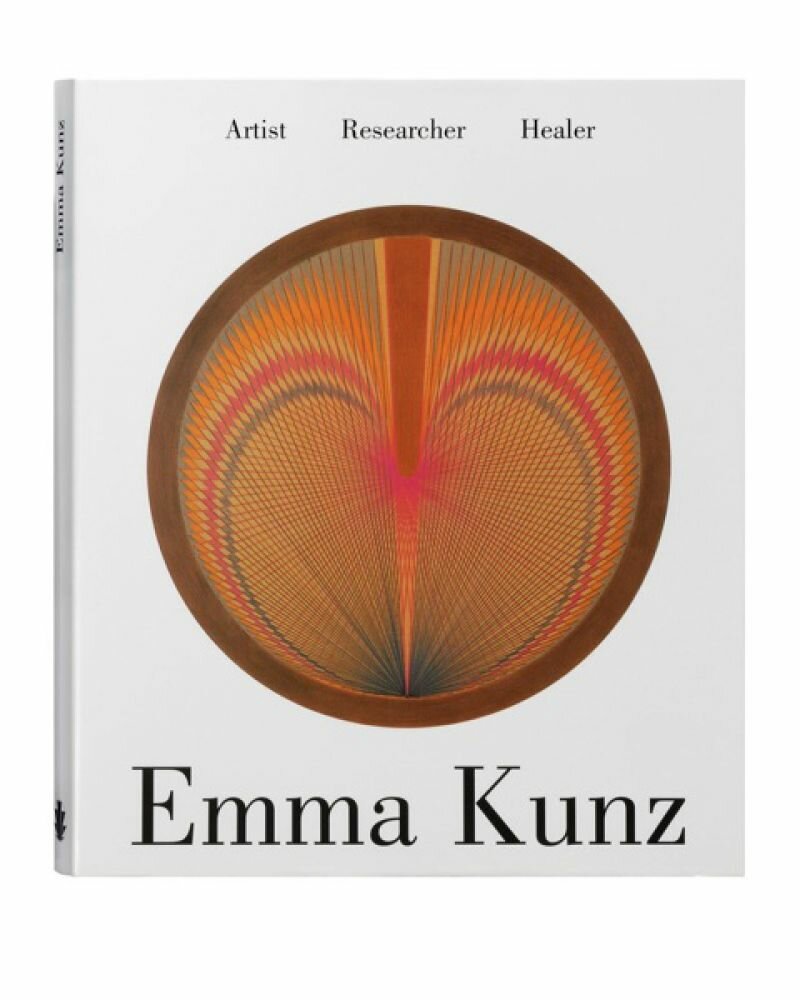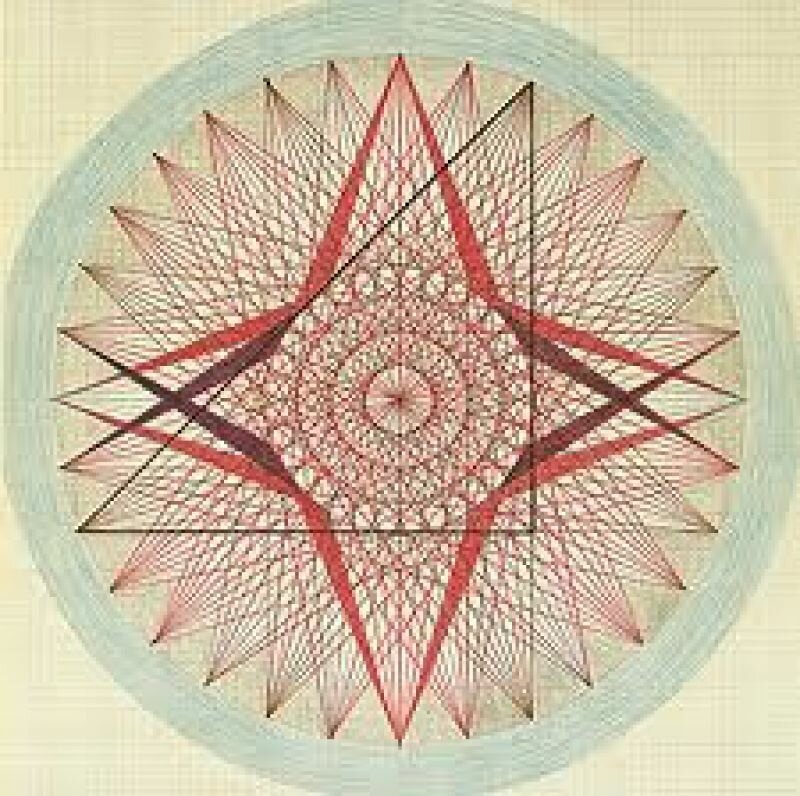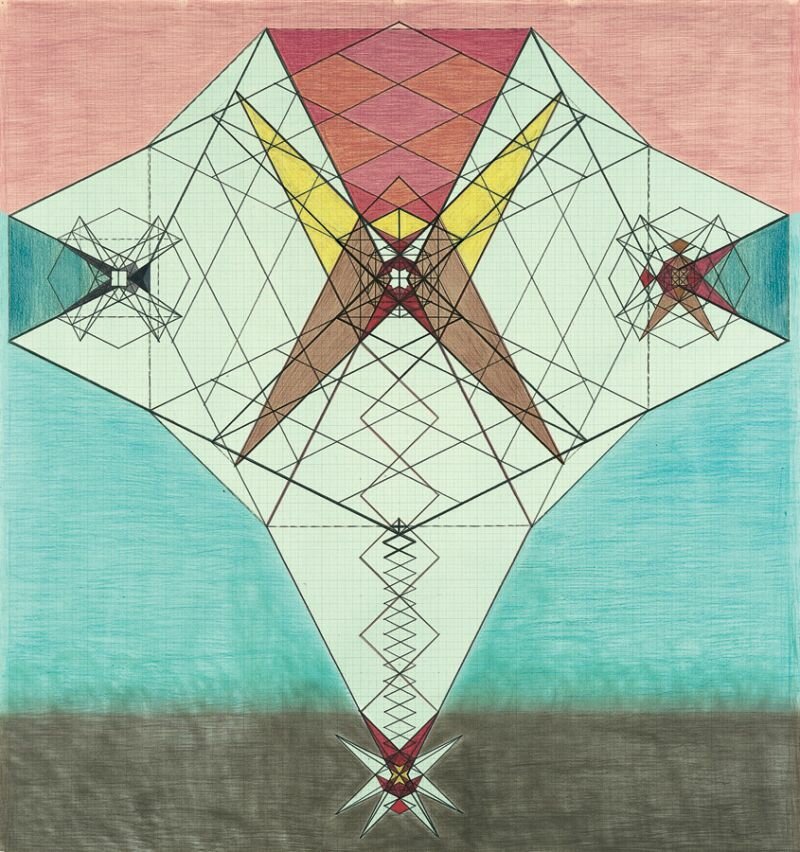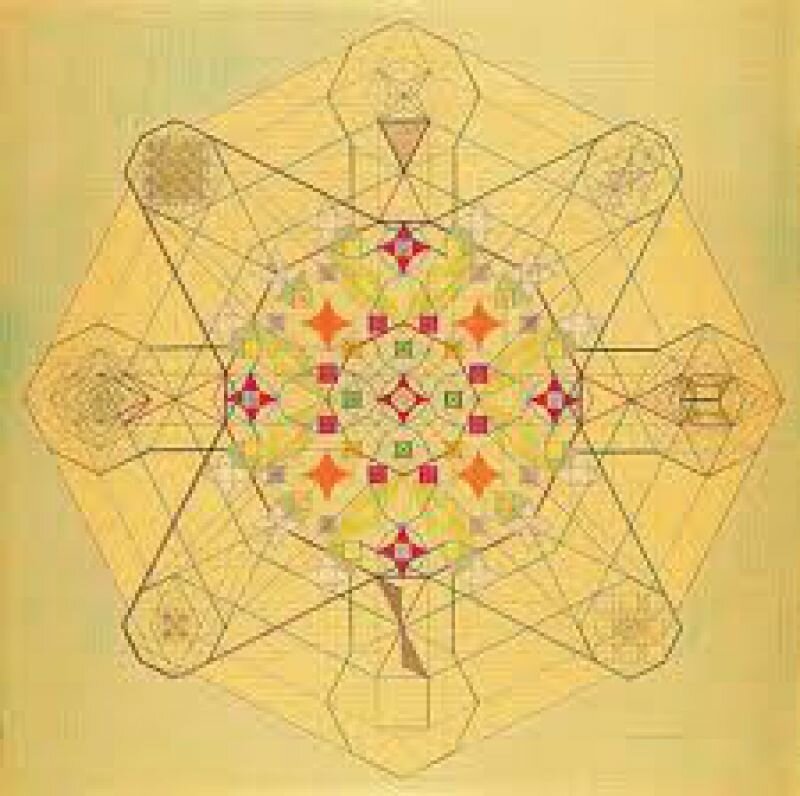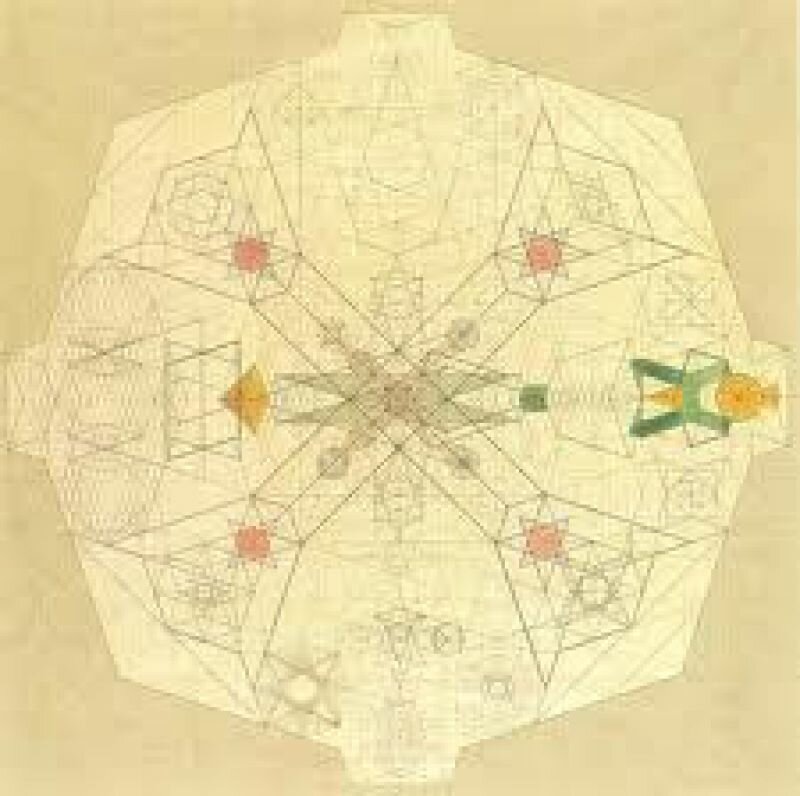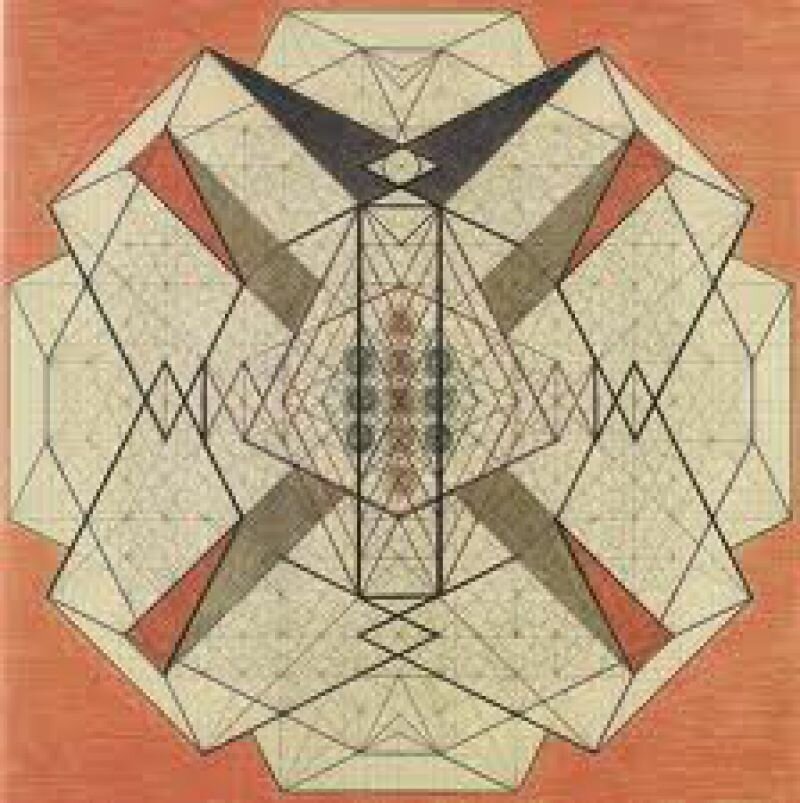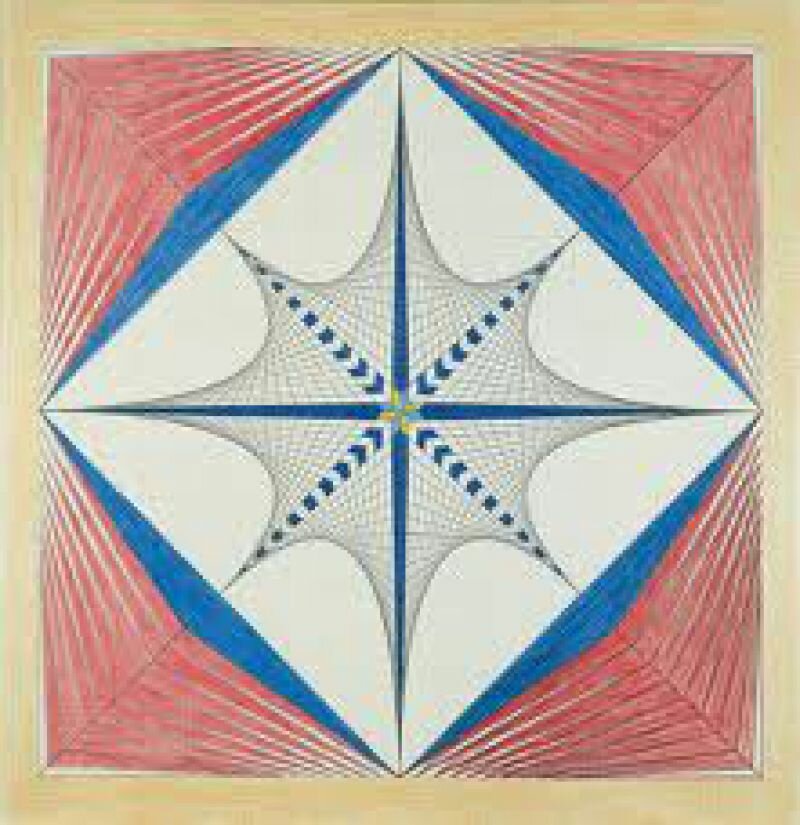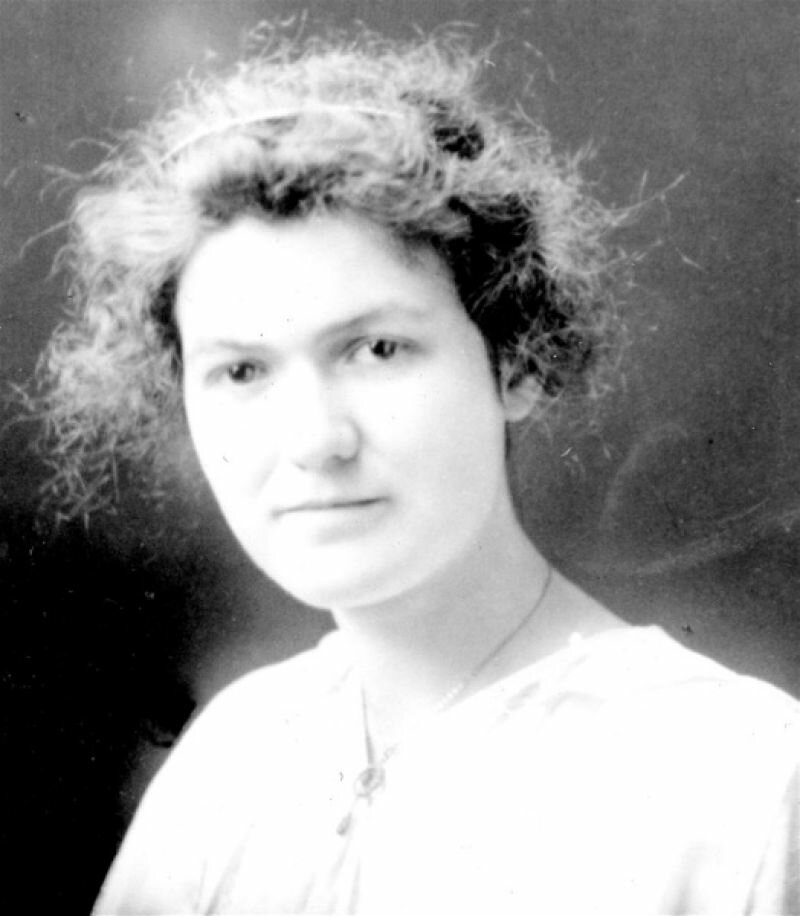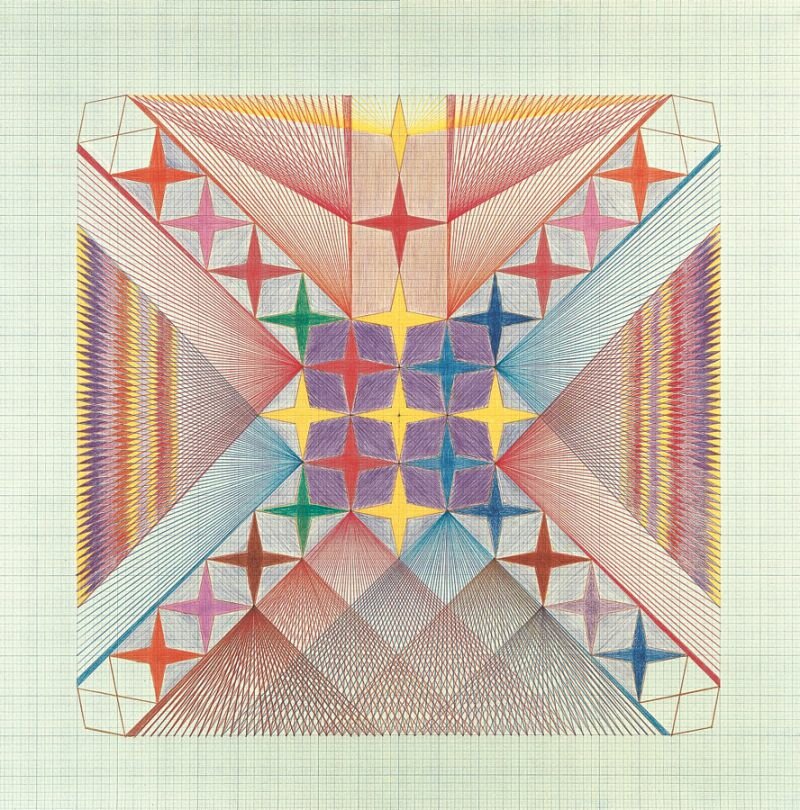Emma Kunz was a popular healer and visionary. People came to her for her healing powers or to ask her questions about their futures. To help them, Kunz would make drawings. During lengthy sessions, some lasting up to twenty-four hours, Kunz would use her artworks as a map of the future. These maps acted like a navigational system to explore existential questions, as well as a system to diagnose her patients.
Kunz was never formally trained as an artist and only began drawing when she was late into her forties; intricately drawn large mandalas, complex colours, and variations in lines. While drawing, she would fall into a trance where she would not eat or drink, and fixated herself completely on her patient or the question she was searching to answer. Using a pendulum, she would mark co-ordinates to signal beginning and end points on graph paper. She would then trace billions of lines between these points.
Due to her immense dedication to her drawings, she was able to access dimensions that transcend the consciousness of the every day. The minute precision of these drawings hearkens to meticulous mathematical compositions that, besides their beauty, contain the universe’s secret formulas. A segment of reality outside of the reach of our every day consciousness was revealed to Kunz through these abstract patterns. Kunz wasn’t accepted by the mainstream art world during her lifetime.
Art as a definition was far too restrictive for her. Her geometric play was more than just art. She understood the power of the image and it’s ability to act as a tool to initiate the transformation process within human consciousness, and how this could exert its influence onto the world. Despite this awareness, her drawings lay strewn throughout her home and were never meant to be hung on a wall. ‘My work is meant for the 21st century’, she said. And she was right; her work in all its controversy has only now been accepted by the art world.
Kunz stopped drawing in the sixties. She had no need to anymore. Her connection to the cosmos had grown to such an extent that she could directly receive answers to her questions. The borders between earthly contradictions were lifted.
